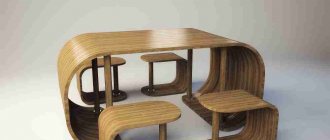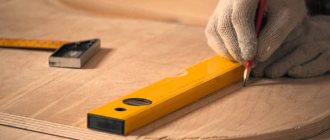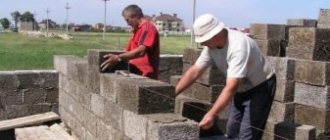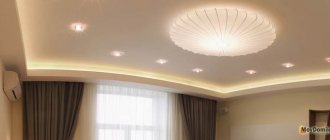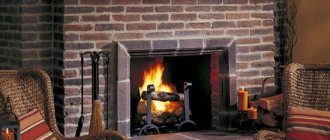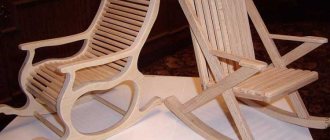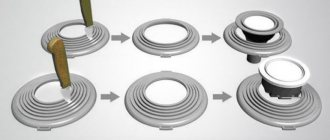- home
- Construction and renovation
- Floor
>
>
⬎
Often, people associate floors with joists with something old, creaky, rotting and obsolete. Of course, there are now many advanced technologies for floors that make it possible to insulate, waterproof and raise the floor level to a greater height, if the design requires it. However, one should not exclude good old logs - the solution is simple and, with high-quality installation, will eliminate the disadvantages typical of such floors.
Advantages of adjustable joists
The most undeniable advantages of adjustable floors are the ability to raise the floor level to a greater height without increasing the overall weight of the structure and the speed of installation, in comparison with various screeds and self-leveling floors. The big advantage is that there are no wet processes and therefore no need for drying. Insulation of such floors also does not cause any problems - polystyrene foam, extruded polystyrene foam, mineral wool, all these materials are acceptable. In comparison with self-leveling, floating screeds, the insulation does not have high requirements for insulation density and it is possible to select a budget material.
When pouring screeds up to 5-10 centimeters thick, the advantages of lags are not relevant, however, situations often arise when the floor level needs to be raised by 15 centimeters or more. Such heights may be required when there is a large difference in floor slabs, during partial renovation of an apartment, where it is necessary to join the old floor on joists.
Of course, there are screeds with the addition of expanded clay, various floating screeds that allow you to raise the floor level and at the same time insulate. As a rule, the cost of materials and work increases, and if a 5-centimeter screed is 1.5-2 times cheaper than an adjustable floor, then with layers of more than 10 centimeters, the cost of the lag remains the same, which cannot be said about wet screeds.
Usage
This method of leveling floors is, first of all, convenient to use where there are a lot of communications and it is necessary to remove them into the underground space
For example, in server rooms and at transformer stations, and also, if necessary, to hide all pipes and other communications in the house. The adjustable leveling design allows you to quickly achieve a level floor and can be successfully used in both new and old buildings. Unlike a concrete screed, the load on the floor in this case is minimal, which is especially important in old buildings. This floor design is ideal for installing multi-level floors. Today, adjustable floors are successfully used both in the residential sector and in public buildings for various purposes
They are used in television studios, control rooms, classrooms and classrooms, conference rooms, gyms, sports facilities, various warehouses and production facilities.
Today, adjustable floors are successfully used both in the residential sector and in public buildings for various purposes. They are used in television studios, control rooms, training rooms and auditoriums, conference rooms, gyms, sports facilities, various warehouses and production facilities.
Flaws
The disadvantages of flooring with joists include the risk that the floor will creak; in an aggressive, humid environment, wood is not so durable. The issue of squeaking is practically reduced to zero when choosing high-quality, dried logs and the correct fasteners. Many people are confused by the possibility of laying tiles on such floors - this problem can be solved, the joists are installed in sufficient quantities to eliminate significant deflections in the canvas, and gypsum fiber is laid over the canvas. Gypsum fiber serves as a damper; even with large fluctuations in the size of the canvas due to changes in humidity, gypsum fiber is quite stable and does not provoke the tile to snap.
The material of the canvas laid on the joists is quite diverse: from the most budget chipboard to two-layer plywood. Planed boards, lining and OSB - you see, a very wide choice for flooring with joists.
Which supports to choose
If you decide to build a subfloor using a jacking system, then the technology will involve the use of special threaded supports. They can be classified into metal and plastic. The latest type of adjustable joist supports are usually made of galvanized steel, so they do not corrode.
Such devices can withstand impressive loads, so they are used when renovating premises not only for residential purposes. The only drawback of such supports is that they contribute to the destruction of the concrete base. Over time, the pins dig into the material, which leads to the formation of cracks.
Plastic adjustable supports for joists differ from metal ones in that they are not as durable. However, the material is not exposed to moisture. If you install rack-bolts with small pitches, the floor will be able to withstand a load of 300 kg per square meter. Plastic supports will not create a load on the concrete floors, and therefore will not contribute to their destruction.
Anchors, fasteners
To attach the logs to the concrete base, it is the anchors that are needed; plastic dowels are not able to cope with the loads to which the logs are subjected. The so-called plastic bushings, which are screwed into the joist and attached to the concrete, are very inconvenient to install; they can only be purchased from those who professionally install floors. Naturally very expensive. In addition, they have questionable reliability; the bushing is attached to the concrete base with a dowel-nail.
The most reliable fasteners can be assembled yourself, despite the cunning marketing of “wet flooring” and then naturally dried bars; they have a bent shape. You can use them, but you should carefully choose those that are smoother. Let me note that the logs do not have to be planed and smooth, preferably straight and not “screwed”. You should also avoid knots; if the hole with the anchor hits a knot, the joist will significantly lose its strength.
Prepared logs can be treated with an antifungal compound; this will not interfere in potentially damp areas.
How to cover logs
Materials can be varied, from rough to finishing. For subsequent finishing, you can lay a regular edged board - this option is more suitable for a private home. Sheet materials are suitable for both private and apartment buildings. It can be plywood, chipboard, OSB. All these materials are considered rough, with subsequent installation of linoleum, laminate and parquet boards. With additional gypsum fiber flooring, tiles are laid.
The finishing coating includes floorboards and lining. Their further finishing consists of sanding and painting (although it is often useful to do this before installation).
As a sheet material, I would like to mention plywood - it is strong, durable and tolerates moisture well. Due to the different orientations of the veneer layers, plywood is less susceptible to variations in size. There is, however, one unpleasant drawback: in most cases, the thickness of the sheets may differ slightly by 1-2 mm, and the difference may be present at different ends of the same sheet. Because of this difference, for linoleum flooring, for example, you will have to putty the seams. However, despite this, plywood is considered the best material for adjustable floors - 10 mm plywood in two layers is the most durable solution. Plywood no thinner than 18 mm is placed in one layer.
Design Features
To understand what adjustable floors are, you need to familiarize yourself with their operating principle. The studs rotate around their axis, which allows you to adjust the floor level horizontally. The same principle applies to floors on slabs, which also move due to rotation. This allows you to set the floor as accurately as possible. You can level the horizontal floor almost perfectly.
Such structures will not sag under weight or “play” over time. You can install them on any available surface. Each floor can be covered with several layers of covering (plywood).
Such floors will be an excellent solution for gyms, clubs, office spaces and so on. By strengthening the load-bearing studs, the load indicator (up to 2 tons per 1 sq. m) can be increased. The service life of adjustable floors is up to 15 years.
Preparing the base
A concrete base is required to securely fasten the anchors. Typically, in commercials, fasteners for joists are installed in a perfectly leveled cement-sand screed (CSS). But the reality is that for real work leveling the base is not required, moreover, usually the screed does not have sufficient strength to reliably hold the anchor. If in your case the installation will be carried out for some reason on the central fiber substation, then you should drill down to the concrete. Or check the strength of your tie by tightening a test anchor. But I still recommend attaching it to concrete.
Preparation consists of cleaning, foaming and caulking various cracks to avoid drafts. You should also mark the location of future logs; this is done on the walls, where the middle of the log will be. When marking, you should take into account the centimeter gaps of the sheets from the walls so that the seams clearly fall in the middle of the joist. The easiest way to mark is this: first, mark the logs on which the sheet joints will be, and only then distribute the remaining logs between the seams so that the distance between them does not exceed 30-40 cm.
I would like to note: usually all the lags are made parallel; at seams perpendicular to the lags, additional lags are not required for connecting sheets; more on this later. Of course, the logs can be set as you like, they can be longitudinal or transverse, the point is that there is no need to make extra crosshairs.
Where and when can it be used
Considering the design features, advantages and disadvantages, we can conclude that this type of flooring is advisable to use when:
- It is necessary to level the surface and significantly raise its level, and the base does not allow for a thick layer of screed. The height of the level rise can reach 20 cm.
- It is necessary to lay communications, for example, heating pipes, under the raised floor.
- It is necessary to make thermal insulation or sound insulation.
- The design of the room provides areas with different floor levels.
Installation of logs
From my own experience, I was convinced that it is more convenient to drill holes for bolts and countersunk nuts in place. If you make holes with countersunk holes in advance, you eliminate the possibility of moving the fastener; this may be necessary when the fastener hits a weak spot in the concrete, a covered void, etc. This is my personal opinion; it is certainly possible to drill holes in the joists in advance. I will describe my method, and it’s up to you to decide which is more convenient and practical. This method is not relevant with ready-made fasteners purchased in online stores - there you need to tighten the lowest nut to fix the anchor.
The joist is laid in the marked place, a hammer drill is used, and a hole is drilled directly through the joist in the concrete base. Having drilled, the anchor is immediately inserted without washers and nuts. This will prevent the jog from moving during further drilling. I would like to note that in panel and monolithic houses, in most cases, the thickness of the ceiling is no more than 10 centimeters, so drilling more than 5 cm is highly undesirable, be careful!
Having drilled, you need to clean the hole with the same hammer drill in drilling mode so that all the crumbs come out. In this way, all the joists are drilled and the bolts are tightened in the anchors. The fasteners are securely fixed in the concrete, but the logs have free movement up and down.
After tightening the anchors, the bolt heads are cut off and the joists are pulled off. Screw one nut onto each protruding stud and put one washer on. It is not easy to screw a nut onto a sawn bolt, so it is useful to have a small file on hand; trimming the sawn edges will make it easier to screw on the nut. Next, holes for the upper nuts are drilled into the joists, they are put back into place, the position of the joists is adjusted using the lower nuts, and they are tightened from above with a second nut and washer. It is most convenient to adjust the lag using a laser level. A tubular wrench is convenient for tightening the upper nuts, and an open-end wrench for adjusting the lower nuts.
After all the adjustments, the studs sticking out above the joist are cut off. The installation of the logs is complete. If insulation was planned, the insulation is laid and foamed. Excess foam is cut off and the floor is ready for laying.
Material requirements
The best option is to buy ready-made timber. It will already meet all the requirements for density and reliability. Despite this, it is possible to make the timber yourself. The process of forming the product will not take much time, but will require high-quality materials. The wood must have a certain moisture level - 18 or 20%. If this value is higher, the structure of the entire floor will soon deform. This will happen immediately after the wood dries.
As a rule, most buyers choose pine. This material is characterized by increased resistance to all kinds of influences and is quite durable. Fir and spruce are also often used. In general, quality is not considered the main criterion when choosing materials. You can buy both the second and third grade of wood. The whole thing will form a strong structure.
Note! In cases where the repair budget is small, you can use simple boards. They are often fastened together with self-tapping screws. They are placed on the edge.
When installation of beams that are too long is required, a special lock-type connection is used. You can also join the material end to end. In the place where the beams are attached, specialists install a stable support. Small brick pillars often serve as such support.
Strength and smooth sides are the main indicator of the reliability of the subfloor. Materials must be resistant to deformation under critical loads. Sometimes reinforced concrete, metal parts or plastic are chosen. But none of the listed options is as successful as wooden beams.
Since quality is not a priority, you can buy cheaper product options. Pine and spruce are considered the only types of wood that can be bought cheaply. However, as experienced specialists say, installing logs from these rocks will require additional waterproofing.
Aspen is considered expensive, as is larch. These breeds, although overpriced, are irreplaceable options in rooms where there is a high level of humidity. If the key selection criteria are the material's resistance to rapid decay and maximum strength, larch will be the best solution.
Dimensions of bars
Correctly determining the size of the logs will allow you to create the most reliable and durable structure. Before paying for goods in a specialized store, it is necessary to calculate not only the length of the products, but also the optimal thickness.
In general, determining the length is not a difficult task. Initially, a certain direction of laying is set, and the length is calculated relative to it. In this case, all dimensions of the room in which the flooring structure is being constructed should be taken into account. As a rule, the length of the beams is set 3 cm less than the length and width of the room. Why is this being done? So that over time, due to temperature changes, the entire coating does not deform.
Splicing lags
High strength and stability of the structure can be ensured by using solid materials. True, this option is only possible if the parameters of the beams coincide with the dimensions of the room. But it may also turn out that the length of the lumber will not be enough. How to strengthen sexual lags in this case?
Increasing the size and strengthening the structure is carried out by splicing the material. To do this, take products with a half-wood cut and fasten them together. Often, special galvanized linings are used for these purposes. The rules for splicing bars are as follows.
The connection point must be supported by a special support. To ensure stability, you can build a small support pillar from brick or other materials.
The connection points of the joists must necessarily move relative to each other.
If these rules are not followed, home owners risk ending up with a floor with weak spots where the joist connection may soon fail.
Also an important fact that cannot be neglected is the obligatory displacement of the place where adjacent joists join together. This rule should be taken into account when purchasing materials, since as a result, the parameters of the original beams may change.
Optimal cross section
The next criterion for selecting products is the cross-section. It is a little more difficult to install than the required length. What is a section? This is the thickness of the beam, which directly depends on the material and design data of the entire structure.
To calculate the optimal cross-section of the beams, it is necessary to take into account the maximum load and the distance between the supports of the beams. For residential premises there is a single maximum load indicator - 300 kilograms per square meter.
Thanks to generally accepted data, you can begin to calculate the cross section. You can use a ready-made table, which was compiled by specialists in floor installation. For clarity, here are a few examples.
In apartments, as well as in private houses, a scheme is used - for 2 meters of span length, wood with dimensions of 110 by 60 mm is used. If the length is 3 meters, the timber is selected with dimensions of 150 by 80 mm. A larger distance means a thicker wood product.
Detailed diagram:
- 2 m – 110 by 60 mm.
- 3 m – 150 by 80 mm.
- 4 m – 180 by 100 mm.
- 5 m – 200 by 150 mm.
- 6 m – 220 by 180 mm.
The section is always chosen to be rectangular. It is reliable and practical during installation. Moreover, timber laid on edge can withstand extreme loads and last for many years.
Distance between joists
This stage of calculations is as important as the previous ones. To determine the appropriate pitch, you must first set the thickness of the flooring. Thick materials such as boards make it possible to increase the distance between adjustable joists. In the case where the flooring is made of insufficiently strong material, it is better to place the beams more often.
A practical example of calculation (surface thickness/distance between beams):
- 2 cm – 30 cm.
- 2.4 cm – 40 cm.
- 3 cm – 50 cm.
- 3.5 cm – 60 cm.
- 4 cm – 70 cm.
- 4.5 cm – 80 cm.
- 5 cm – 100 cm.
This guide will allow everyone to establish the optimal relationship between the distance and the thickness of the finishing flooring.
Flooring
The most important thing in flooring is to align the sheets so that the seams fall in the middle of the joists. It may happen that the seams will be significantly displaced, if the sheet does not fit onto the joist by at least a centimeter, you will have to change the layout of the sheets or make additional seams; twisting the joist is much more problematic. The seams running across the logs are pulled together from below with a bar or the same sheet material. It is important to leave a 5-15 mm gap from the walls, the canvas will have room to expand if something happens, this will in some cases avoid the floor creaking.
When laying plywood, an unpleasant phenomenon may occur: the screws may not fit into the canvas and burst, the result is not a tight fit and a squeak may appear in this place. In the place of the broken screw, you need to tighten a new one, stepping back a few centimeters. If the screws break too often, there are two options: take thicker screws instead of 3mm, for example 6mm, or before tightening, make a countersink with a drill slightly larger than the diameter of the head.
That's all, I hope I gave comprehensive information.
Conclusion
The process of installing an adjustable floor itself, as you understand, is not particularly difficult; all the work may be familiar to many. Your biggest concern should be the quality of the building materials used in this process. You should not save on this, as you will have to invest in repairs in the future.
In the video presented in this article you will find additional information on this topic.” width=”640″ height=”360″ frameborder=”0″ allowfullscreen=”allowfullscreen”>
